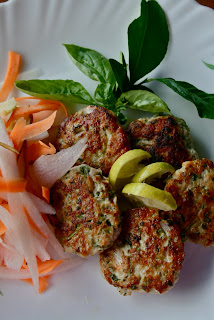We’ve been making this soupy-rice (or noodles) for two/three years now, thanks to the gifts of a kafir lime tree (courtesy Tushita), a basil plant (courtesy Saul and Carmen), a bountiful lemongrass plant and a show-offy chili plant. On a trip to Singapore, we came across something called Thunder-Tea Rice which was really, really similar! Our version doesn’t use actual tea among other things, but its sunshine in a bowl if you’re feeling a little under the weather. (Note: If you’ve got extra liquid soup left, freeze it for a later date.)
Ingredients:
Fragrant boiled Rice:
2 cups brown rice (we now only use red mangalore or goa rice, washed well)
Boiled with about 4 tablespoons grated ginger, 8 – 10 sprigs of lemongrass, a vegetable (or beef) stock cube, 4 kafir lime leaves and salt to taste. Drain, discard the aromatics.
For the soup:
8-10 sprigs of lemongrass (bulb bruised)
1 cup chopped coriander (stalks included if possible)
8-10 kafir lime leaves
Zest of 2 lemons
3 tablespoons grated ginger (or galangal)
2 onions – chopped
4 spring onions – chopped (green bits included)
Stock or stock cube
2 de-seeded green chilies
2 litres of water (at least)
Optional add-ons
Baby corn / French Beans
Snow Peas /Asparagus
Zucchini / Broccoli
Cubed chicken
Sprouts
Baby Spinach
Shredded basil leaves
Fried cubes of tofu

Toasted peanuts
Method: Put all your soup ingredients to boil, then simmer for about 20 mins.
Now, the easy way: put in your chicken and after that, put in the veggies.
Slightly more complicated but more fun to eat: Spoon out about 3 cups of the hot soup into another pot on the simmer. Put the chicken (if using) into the original pot to cook. In the new pot, start blanching your veggies, one set at a time using a slotted spoon to drain. When you’re done with all, empty the hot, veggie broth back into the main pot of soup!
Drain the soup into a tea-pot. Put the rice at the bottom of bowls, add the vegetables and meat and garnishes and gently pour the soup over.





